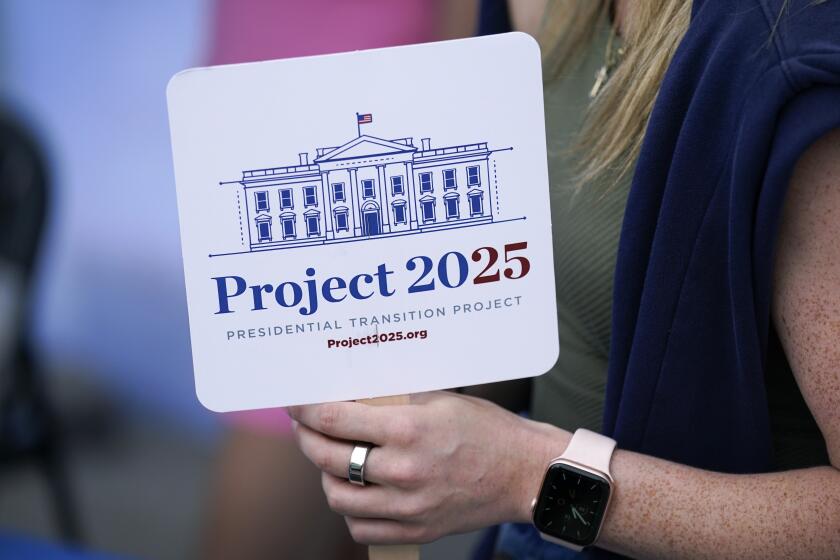Consumer Prices Up 0.2% in August; Food Costs Climb as Oil Declines
- Share via
WASHINGTON — Consumer prices rose a moderate 0.2% in August, the Labor Department reported Tuesday, as food prices followed the pattern of recent months by rising just enough to offset declining retail energy prices.
Economists in and out of government generally expect that those two trends will begin to reverse in the next few months as gasoline and heating oil become more expensive and the recent spurt in food prices levels off. But the result, they say, will be about the same: low inflation.
Reporting the consumer price index for August, the Bureau of Labor Statistics pointed out that retail prices have risen at an annual rate of only 0.1% since the beginning of the year, when a steep decline in energy prices--at an annual rate of 25.8%--temporarily put the economy on a path of deflation.
Prices now seem to have reverted to an inflationary path but at a very low and stable rate. The statistics bureau said August inflation would have been 0.3% if food and energy had been removed from the calculation.
Before seasonal adjustment, the consumer price index, from which the Labor Department computes monthly price changes, rose by 0.6 points to 328.6 in August. The index is developed from a 1967 base of 100, meaning that a selected cross section of consumer goods costing $100 in 1967 now costs $328.60.
Retail prices in the Los Angeles-Long Beach-Anaheim area were unchanged in August, but they have increased by 2.2% in the last 12 months, compared to a mere 1.6% increase nationwide during the same period. In the Los Angeles area, goods costing $100 in 1967 cost $330.90 at the end of last month.
Beryl Sprinkel, President Reagan’s chief economic adviser, predicted “modest increases in the inflation rate, somewhere in the 3% to 3.5% range” during the next year as oil prices stabilize and as the dollar’s decline in relation to other currencies translates into higher prices for imported goods. “We do expect that inflation is going to ooze up in the months ahead,” he said.
Private-sector economists seemed mostly in agreement. The small August price increases “were what we were expecting,” said Douglas Handler of Wharton Econometrics, a Philadelphia forecasting firm.
“It was a rerun of last month. People are not buying gas and oil at present as they used to in the past, and the food increases were about the same as in the previous month,” Handler said. “But we see the food price increases hitting their peak about now and then stabilizing, which should offset the increasing energy prices we expect later on.”
In August, food prices increased 0.9%, compared to a 0.8% rise in July. Energy prices fell 1.9%, compared to a 4.1% decline in July, when consumer price inflation was zero. Continuing another trend was the cost of medical care, which has been consistently higher than the actual rate of inflation and which rose 0.6% in August. All other services were up 0.3%, a rate that reinforces economists in their belief that the “underlying” rate of inflation, after subtracting food and energy, is about 3.5% a year.
“We expect to see higher inflation than in the first half of the year--but not much more than about 3.5%,” Martin Mauro of Merrill Lynch said. Mauro warned, though, that higher gasoline prices are a near certainty in the CPI report for September, which could bring a jump in overall retail prices unless food price increases moderate.
Lea Tyler of Chase Econometrics in Bala-Cynwyd, Pa., likewise saw the August price report in line with expectations and with recent trends. “If there was any surprise at all, it’s that it was food, not energy, that counted for most of the increase,” she said.
More to Read
Get the L.A. Times Politics newsletter
Deeply reported insights into legislation, politics and policy from Sacramento, Washington and beyond. In your inbox twice per week.
You may occasionally receive promotional content from the Los Angeles Times.










